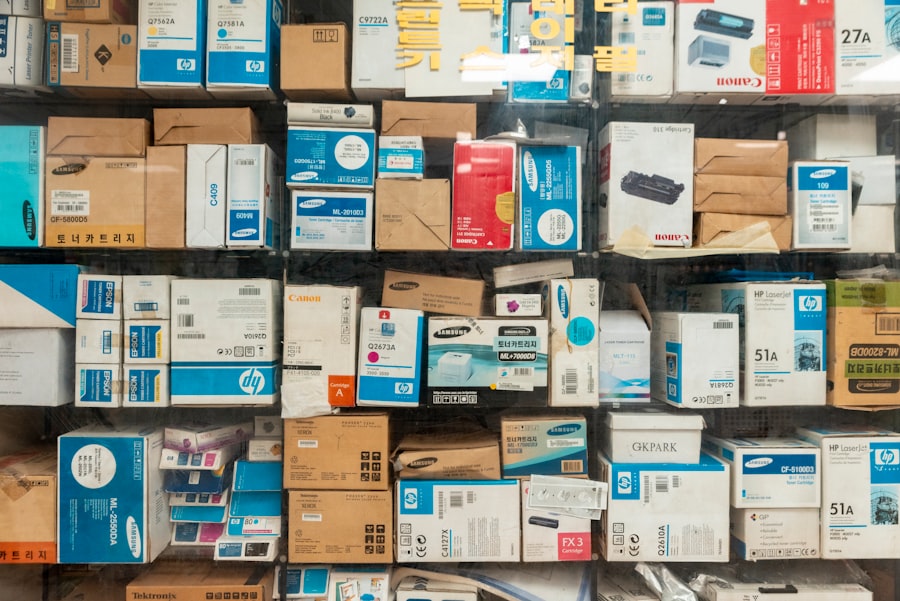Amazon FBA: How to Start Your Business from Scratch

Amazon FBA, or Fulfillment by Amazon, is a service provided by the e-commerce giant that allows sellers to store their products in Amazon’s fulfillment centers. When a customer places an order, Amazon picks, packs, and ships the product on behalf of the seller. This means that sellers do not have to worry about the logistics of storing and shipping their products, as Amazon takes care of it for them. Additionally, Amazon FBA also offers customer service and returns handling for products sold through the program.
To get started with Amazon FBA, sellers first need to create an Amazon Seller account and then enroll in the FBA program. Once enrolled, sellers can send their products to Amazon’s fulfillment centers, where they will be stored until they are sold. When a customer places an order, Amazon takes care of the shipping and customer service, leaving sellers with more time to focus on growing their business. Amazon FBA is a popular choice for many sellers due to its convenience and the trust that customers have in the Amazon brand.
Key Takeaways
- Amazon FBA is a program that allows sellers to store their products in Amazon’s fulfillment centers and have them shipped directly to customers.
- Research and choose profitable products to sell by analyzing demand, competition, and profit margins using tools like Jungle Scout and Helium 10.
- Set up your Amazon Seller Account and enroll in FBA to start selling and shipping products through Amazon’s platform.
- Source and ship your products to Amazon’s fulfillment centers by coordinating with suppliers and using Amazon’s shipping and labeling requirements.
- Create an effective product listing by optimizing keywords, images, and product descriptions to increase visibility and sales on Amazon.
Researching and Choosing Profitable Products to Sell
When it comes to selling products on Amazon FBA, choosing the right products is crucial for success. Sellers should conduct thorough research to identify profitable products with high demand and low competition. One way to do this is by using tools such as Jungle Scout or Helium 10 to analyze sales data and trends on Amazon. Sellers should also consider factors such as product size and weight, as these can affect storage and shipping costs.
Another important aspect of product research is understanding the needs and preferences of the target market. Sellers should consider factors such as consumer trends, seasonality, and customer reviews to identify products that are likely to sell well on Amazon. Additionally, sellers should also consider the potential for product differentiation and branding to stand out from the competition. By conducting thorough research and choosing the right products to sell, sellers can increase their chances of success on Amazon FBA.
Setting Up Your Amazon Seller Account and FBA
To get started with Amazon FBA, sellers first need to create an Amazon Seller account. This can be done by visiting the Amazon Seller Central website and following the steps to register as a seller. Once the account is set up, sellers can then enroll in the FBA program by selecting the option to “Use Amazon fulfillment” when creating a new product listing.
After enrolling in the FBA program, sellers can start sending their products to Amazon’s fulfillment centers. This involves creating a shipment plan in Seller Central, preparing the products for shipment, and then shipping them to the designated fulfillment center. Once the products arrive at the fulfillment center, they will be checked in and made available for sale on Amazon. Setting up an Amazon Seller account and enrolling in FBA is a relatively straightforward process, but it is important for sellers to familiarize themselves with the requirements and guidelines set by Amazon.
Sourcing and Shipping Your Products to Amazon’s Fulfillment Centers
Once sellers have chosen their products and set up their Amazon Seller account and FBA, the next step is to source and ship their products to Amazon’s fulfillment centers. There are several ways to source products, including wholesale, private label, and arbitrage. Sellers should consider factors such as product quality, pricing, and supplier reliability when sourcing products for Amazon FBA.
After sourcing the products, sellers need to prepare them for shipment to Amazon’s fulfillment centers. This involves labeling the products with unique barcodes, creating a shipment plan in Seller Central, and then shipping the products to the designated fulfillment center. Sellers can choose to ship the products themselves or use a freight forwarder to handle the logistics. It is important for sellers to carefully follow Amazon’s guidelines for packaging and shipping to ensure that their products are received and checked in without any issues.
Creating an Effective Product Listing and Optimizing for Sales
Once the products are received at Amazon’s fulfillment centers, sellers need to create an effective product listing to attract customers and drive sales. This involves writing compelling product titles, bullet points, and product descriptions that highlight the features and benefits of the product. Sellers should also use high-quality images that showcase the product from different angles and provide a clear view of its features.
In addition to creating a compelling product listing, sellers should also optimize their listings for search by using relevant keywords in their titles and descriptions. This can help their products appear higher in search results and attract more potential customers. Sellers can use tools such as MerchantWords or Google Keyword Planner to identify relevant keywords for their products. By creating an effective product listing and optimizing it for sales, sellers can increase their chances of attracting customers and driving sales on Amazon FBA.
Managing Your Inventory and Fulfillment Process

Managing inventory is a crucial aspect of running a successful Amazon FBA business. Sellers need to keep track of their inventory levels and ensure that they have enough stock to meet customer demand. This involves monitoring sales data, forecasting demand, and replenishing inventory as needed. Sellers can use inventory management tools such as RestockPro or InventoryLab to streamline this process.
In addition to managing inventory, sellers also need to monitor the fulfillment process to ensure that orders are being processed and shipped on time. This involves keeping track of order status, monitoring shipping times, and addressing any issues that may arise with fulfillment. By effectively managing their inventory and fulfillment process, sellers can provide a positive customer experience and maintain a healthy supply chain for their Amazon FBA business.
Scaling Your Amazon FBA Business for Long-Term Success
As sellers gain experience and success with Amazon FBA, they may consider scaling their business for long-term growth. This can involve expanding their product line, entering new markets, or diversifying their sales channels. Sellers can also consider investing in marketing strategies such as advertising or promotions to increase visibility and drive sales.
Another way to scale an Amazon FBA business is by optimizing operations and streamlining processes. This can involve outsourcing tasks such as customer service or order fulfillment to free up time for strategic decision-making. Additionally, sellers can consider leveraging data analytics and automation tools to make informed business decisions and improve efficiency.
In conclusion, Amazon FBA offers a convenient and scalable platform for sellers to reach a large customer base and grow their e-commerce business. By understanding how Amazon FBA works, conducting thorough product research, setting up an effective seller account, sourcing and shipping products, creating compelling product listings, managing inventory and fulfillment processes, and scaling their business for long-term success, sellers can maximize their potential on the platform and achieve their e-commerce goals.
Looking to expand your knowledge on starting a business from scratch with Amazon FBA? Check out this insightful article on howtostart.digital that delves into the essential steps and strategies for launching a successful venture. Whether you’re a beginner or an experienced entrepreneur, this article provides valuable insights and practical tips to help you navigate the complexities of Amazon FBA and establish a thriving business.
FAQs
What is Amazon FBA?
Amazon FBA stands for Fulfillment by Amazon. It is a service provided by Amazon that allows sellers to store their products in Amazon’s fulfillment centers. Amazon then picks, packs, ships, and provides customer service for these products.
How do I start an Amazon FBA business from scratch?
To start an Amazon FBA business from scratch, you will need to create an Amazon seller account, find a product to sell, source your products, create a listing on Amazon, and send your products to Amazon’s fulfillment centers.
What are the benefits of using Amazon FBA for my business?
Using Amazon FBA can provide benefits such as access to Amazon’s large customer base, Prime shipping eligibility, customer service support, and the ability to outsource storage and shipping logistics.
What are the costs associated with using Amazon FBA?
The costs associated with using Amazon FBA include referral fees, fulfillment fees, storage fees, and optional services fees. These fees can vary based on the size and weight of your products, as well as the time of year.
How do I find products to sell on Amazon FBA?
You can find products to sell on Amazon FBA by conducting market research, analyzing trends, and identifying products with high demand and low competition. It’s important to consider factors such as profit margins, product size, and potential for growth.





